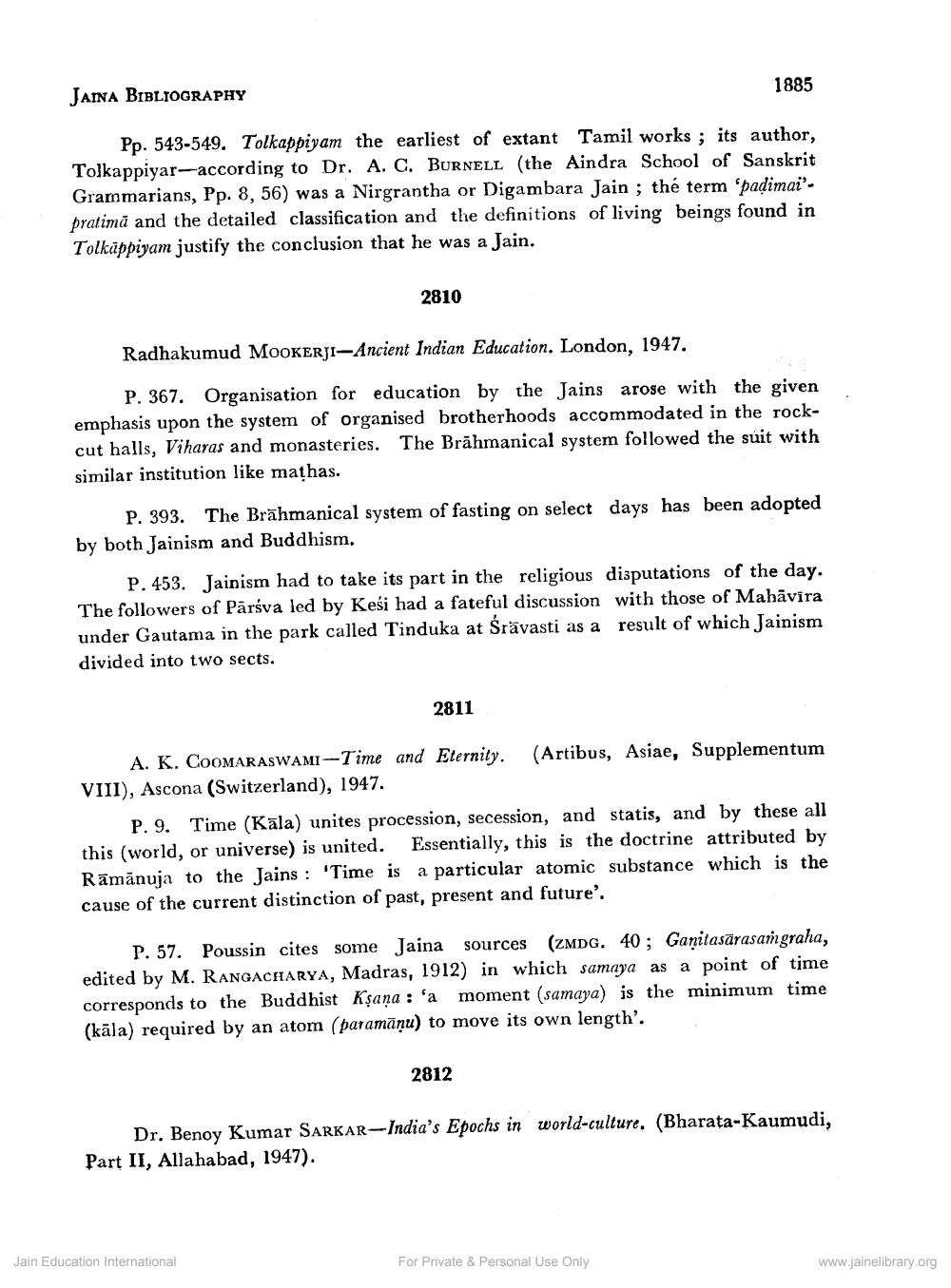________________
JAINA BIBLIOGRAPHY
1885
Pp. 543-549. Tolkappiyam the earliest of extant Tamil works ; its author, Tolkappiyar-according to Dr. A. C. BURNELL (the Aindra School of Sanskrit Grammarians, Pp. 8, 56) was a Nirgrantha or Digambara Jain ; the term 'padimai'pratimă and the detailed classification and the definitions of living beings found in Tolküppiyam justify the conclusion that he was a Jain.
2810
Radhakumud MOOKERJI-Ancient Indian Education. London, 1947.
P. 367. Organisation for education by the Jains arose with the given emphasis upon the system of organised brotherhoods accommodated in the rockcut halls, Viharas and monasteries. The Brāhmanical system followed the suit with similar institution like mathas.
P. 393. The Brāhmanical system of fasting on select days has been adopted by both Jainism and Buddhism.
P. 453. Jainism had to take its part in the religious disputations of the day. The followers of Pārśva led by Kesi had a fateful discussion with those of Mahāvira under Gautama in the park called Tinduka at Śrāvasti as a result of which Jainism divided into two sects.
2811
A. K. COOMARASWAMI-Time and Eternity. (Artibus, Asiae, Supplementum VIII), Ascona (Switzerland), 1947.
P. 9. Time (Kāla) unites procession, secession, and statis, and by these all this (world, or universe) is united. Essentially, this is the doctrine attributed by Rāmānuja to the Jains : 'Time is a particular atomic substance which is the cause of the current distinction of past, present and future'.
P. 57. Poussin cites some Jaina sources (ZMDG. 40; Ganitasārasamgraha, edited by M. RANGACHARYA, Madras, 1912) in which samaya as a point of time corresponds to the Buddhist Kșaņa : 'a moment (samaya) is the minimum time (kāla) required by an atom (paramānu) to move its own length'.
2812
Dr. Benoy Kumar SARKAR-India's Epochs in world-culture. (Bharata-Kaumudi, Part II, Allahabad, 1947).
Jain Education International
For Private & Personal Use Only
www.jainelibrary.org




